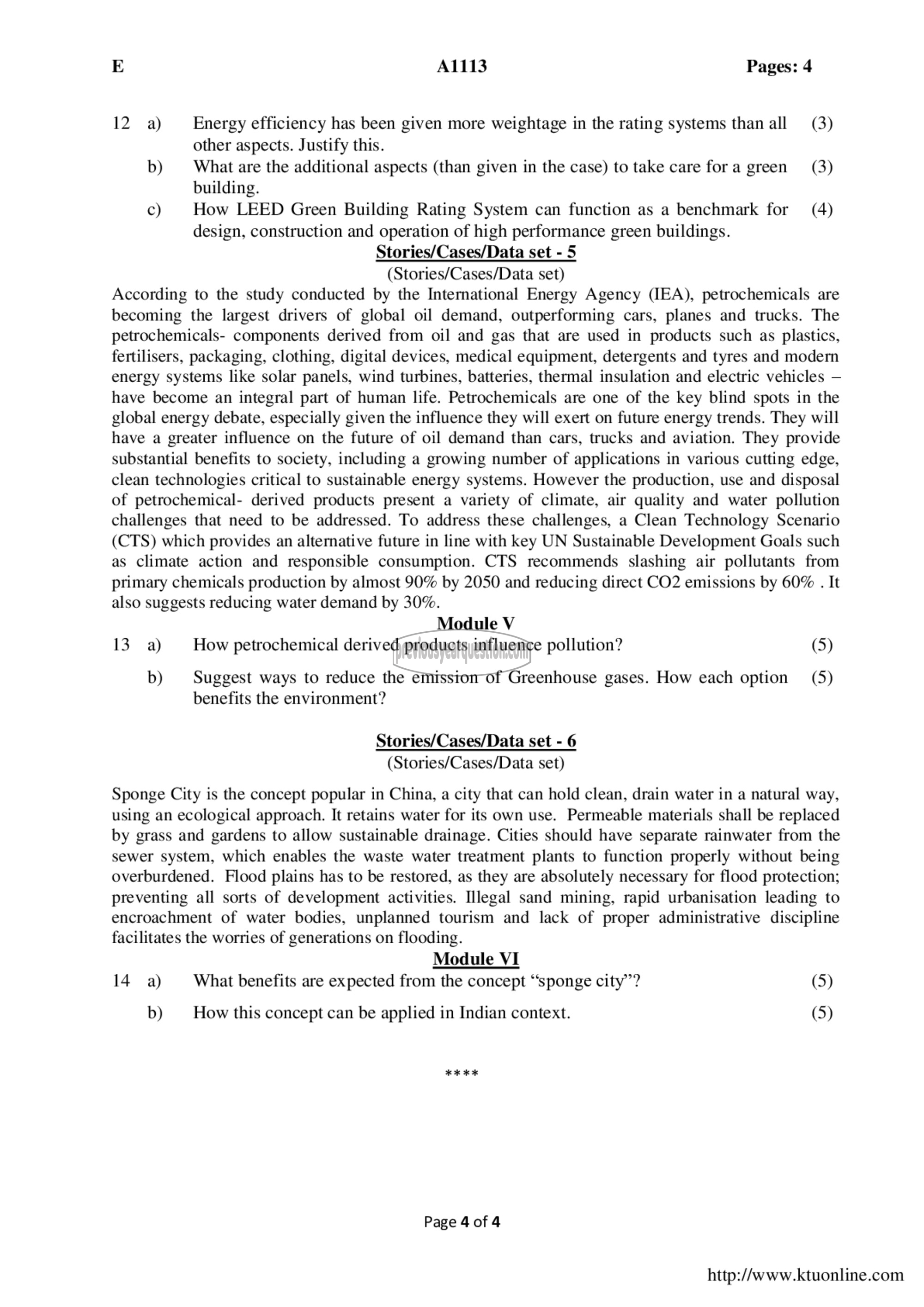APJ ABDUL KALAM TECHNOLOGICAL UNIVERSITY Previous Years Question Paper & Answer
Semester : S1 and S2
Subject : INTRODUCTION TO SUSTAINABLE ENGINEERING
Year : 2019
Term : MAY
Branch : MECHANICAL ENGINEERING
Scheme : 2015 Full Time
Course Code : BE 103
Page:4
E ൧1113 Pages: 4
12 ಬಿ. Energy efficiency has been given more weightage in the rating systems than all (3)
other aspects. Justify this.
b) | What are the additional aspects (than given in the case) to take care fora green (3)
building.
مہ | How LEED Green Building Rating System can function ೩5 a benchmark for (4)
design, construction and operation of high performance green buildings.
Stories/Cases/Data set - 5
(Stories/Cases/Data set)
According to the study conducted by the International Energy Agency (IEA), petrochemicals are
becoming the largest drivers of global oil demand, outperforming cars, planes and trucks. The
petrochemicals- components derived from oil and gas that are used in products such as plastics,
fertilisers, packaging, clothing, digital devices, medical equipment, detergents and tyres and modern
energy systems like solar panels, wind turbines, batteries, thermal insulation and electric vehicles —
have become an integral part of human life. Petrochemicals are one of the key blind spots in the
global energy debate, especially given the influence they will exert on future energy trends. They will
have a greater influence on the future of oil demand than cars, trucks and aviation. They provide
substantial benefits to society, including a growing number of applications in various cutting edge,
clean technologies critical to sustainable energy systems. However the production, use and disposal
of petrochemical- derived products present a variety of climate, air quality and water pollution
challenges that need to be addressed. To address these challenges, a Clean Technology Scenario
(CTS) which provides an alternative future in line with key UN Sustainable Development Goals such
as climate action and responsible consumption. CTS recommends slashing air pollutants from
primary chemicals production by almost 90% by 2050 and reducing direct CO2 emissions by 60% . It
also suggests reducing water demand by 30%.
Module V
13 a) — How petrochemical derived products influence pollution? (5)
b) | Suggest ways to reduce the emission of Greenhouse gases. How each option (5)
benefits the environment?
Stories/Cases/Data set - 6
(Stories/Cases/Data set)
Sponge City is the concept popular in China, a city that can hold clean, drain water in a natural way,
using an ecological approach. It retains water for its own use. Permeable materials shall be replaced
by grass and gardens to allow sustainable drainage. Cities should have separate rainwater from the
sewer system, which enables the waste water treatment plants to function properly without being
overburdened. Flood plains has to be restored, as they are absolutely necessary for flood protection;
preventing all sorts of development activities. Illegal sand mining, rapid urbanisation leading to
encroachment of water bodies, unplanned tourism and lack of proper administrative discipline
facilitates the worries of generations on flooding.
Module VI
14 a) What benefits are expected from the concept “sponge city”? (5)
0) — How this concept can be applied in Indian context. (5)
KKK
Page 4 of 4
http://www.ktuonline.com
